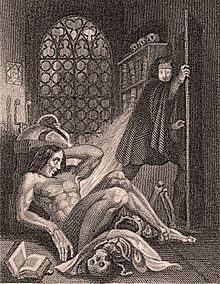
John William Polidori was a British writer and physician. He is known for his associations with the Romantic movement and credited by some as the creator of the vampire genre of fantasy fiction. His most successful work was the short story "The Vampyre" (1819), the first published modern vampire story. Although the story was at first erroneously credited to Lord Byron, both Byron and Polidori affirmed that the author was Polidori.

Frankenstein's monster or Frankenstein's creature, also commonly known as Frankenstein, is a fictional character who first appeared in Mary Shelley's 1818 novel Frankenstein; or, The Modern Prometheus as the main antagonist. Shelley's title thus compares the monster's creator, Victor Frankenstein, to the mythological character Prometheus, who fashioned humans out of clay and gave them fire.
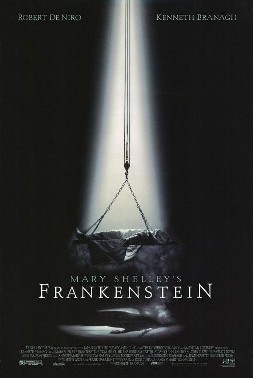
Mary Shelley's Frankenstein is a 1994 science fiction horror film directed by Kenneth Branagh who also stars as Victor Frankenstein, with Robert De Niro portraying Frankenstein's monster, and co-stars Tom Hulce, Helena Bonham Carter, Ian Holm, John Cleese, Richard Briers and Aidan Quinn. Considered the most faithful film adaptation of Mary Shelley's 1818 novel, Frankenstein; or, The Modern Prometheus, despite several differences and additions in plot from the novel, the film follows a medical student named Victor Frankenstein who creates new life in the form of a monster composed of various corpses' body parts.

The Curse of Frankenstein is a 1957 British horror film by Hammer Film Productions, loosely based on the 1818 novel Frankenstein; or, The Modern Prometheus by Mary Shelley. It was Hammer's first colour horror film, and the first of their Frankenstein series. Its worldwide success led to several sequels, and it was also followed by new versions of Dracula (1958) and The Mummy (1959), establishing "Hammer Horror" as a distinctive brand of Gothic cinema.
Dr. Waldman is a fictional character who appears in Mary Shelley's 1818 novel, Frankenstein; or, The Modern Prometheus and in its subsequent film versions. He is a professor at Ingolstadt University who specializes in chemistry and is a mentor of Victor Frankenstein.

Doctor Septimus Pretorius is a fictional character who appears in the Universal film Bride of Frankenstein (1935) as the main antagonist. He is played by British stage and film actor Ernest Thesiger. Some sources claim he was originally to have been played by Bela Lugosi or Claude Rains. Others indicate that the part was conceived specifically for Thesiger.

Frankenstein is a fictional character appearing in American comic books published by DC Comics. He is based on the Frankenstein's monster character created by Mary Shelley.
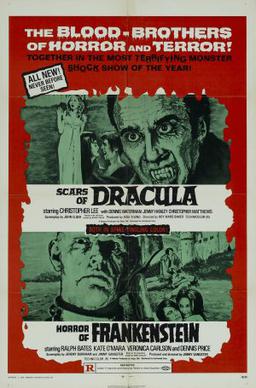
The Horror of Frankenstein is a 1970 British horror film by Hammer Film Productions that is both a semi-parody and semi-remake of the 1957 film The Curse of Frankenstein, of Hammer's Frankenstein series. It was produced and directed by Jimmy Sangster, starring Ralph Bates, Kate O'Mara, Veronica Carlson and David Prowse as the monster. It was the only film in the Frankenstein series which did not star Peter Cushing. The original music score was composed by Malcolm Williamson.
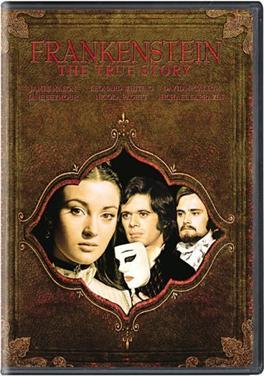
Frankenstein: The True Story is a 1973 British made-for-television film loosely based on the 1818 novel Frankenstein; or, The Modern Prometheus by Mary Shelley. It was directed by Jack Smight, and the screenplay was written by novelist Christopher Isherwood and his longtime partner Don Bachardy.

Mary Shelley's 1818 novel Frankenstein; or, The Modern Prometheus, and the famous character of Frankenstein's monster, have influenced popular culture for at least a century. The work has inspired numerous films, television programs, video games and derivative works. The character of the Monster remains one of the most recognized icons in horror fiction.

Life Without Soul (1915) is a lost horror film, directed by Joseph W. Smiley and written by Jesse J. Goldburg. This film is an adaptation of Mary Shelley's 1818 Gothic novel Frankenstein; or, The Modern Prometheus. The film is about a doctor who creates a soulless man. In the end, it turns out that a young man has dreamed the events of the film after falling asleep reading Shelley's novel.
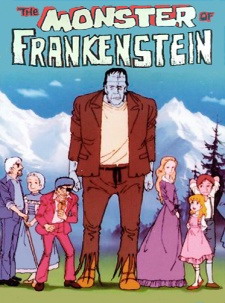
Kyōfu Densetsu Kaiki! Frankenstein, is a 1981 Japanese anime television film loosely based on Mary Shelley's 1818 novel Frankenstein; or, The Modern Prometheus and the Marvel comic book Monster of Frankenstein. In this 98-minute violent, adult-oriented film, the creature was portrayed as a misunderstood monster, who only wanted to be loved. The film was dubbed and released in the U.S. in 1984. The dubbed version never had a title but was advertised as both Monster of Frankenstein and Frankenstein Legend of Terror.

Frankenstein; or, The Modern Prometheus is an 1818 novel written by English author Mary Shelley. Frankenstein tells the story of Victor Frankenstein, a young scientist who creates a sapient creature in an unorthodox scientific experiment. Shelley started writing the story when she was 18, and the first edition was published anonymously in London on 1 January 1818, when she was 20. Her name first appeared in the second edition, which was published in Paris in 1821.
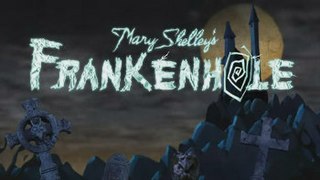
Mary Shelley's Frankenhole is an American adult stop motion-animated television series created by Dino Stamatopoulos for Cartoon Network's late night programming block Adult Swim. The series premiered on June 27, 2010 and ended on March 25, 2012, with a total of 20 episodes, over the course of 2 seasons.
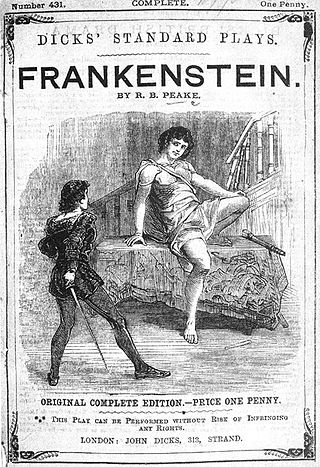
Presumption; or, the Fate of Frankenstein is an 1823 play in three acts by Richard Brinsley Peake based on the 1818 novel Frankenstein; or, The Modern Prometheus by Mary Shelley. It is the first recorded theatrical adaptation of the novel and had 37 performances during its original run. It was revived at the English Opera House until at least 1850.

Elizabeth Frankenstein is a fictional character first introduced in Mary Shelley's 1818 novel Frankenstein; or, The Modern Prometheus. In both the novel and its various film adaptations, she is the fiancée of Victor Frankenstein.

The Bride of Frankenstein is a fictional character first introduced in Mary Shelley's 1818 novel Frankenstein; or, The Modern Prometheus and later in the 1935 film Bride of Frankenstein. In the film, the Bride is played by Elsa Lanchester. The character's design in the film features a conical hairdo with white lightning-trace streaks on each side, which has become an iconic symbol of both the character and the film.
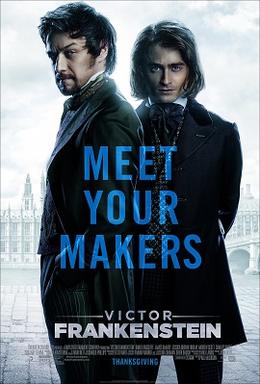
Victor Frankenstein is a 2015 American science fantasy horror film based on contemporary adaptations of Mary Shelley's 1818 novel Frankenstein; or, The Modern Prometheus. It is directed by Paul McGuigan and written by Max Landis, and stars Daniel Radcliffe, James McAvoy, Jessica Brown Findlay, Andrew Scott, and Charles Dance. The film was released by 20th Century Fox on November 25, 2015.

Since the initial publication of Mary Wollstonecraft Shelley's novel Frankenstein; or, The Modern Prometheus in 1818, there has existed uncertainty about the extent to which Mary Shelley's husband, Percy Bysshe Shelley, contributed to the text. While the novel was conceived and mainly written by Mary, Percy is known to have provided input in editing and publishing the manuscript. Some critics have alleged that Percy had a greater role—even the majority role—in the creation of the novel, though mainstream scholars have generally dismissed these claims as exaggerated or unsubstantiated. Based on a transcription of the original manuscript, it is currently believed that Percy contributed between 4,000 and 5,000 words to the 72,000 word novel.
Frankenstein is a British horror-adventure film series produced by Hammer Film Productions. The films, loosely based on the 1818 novel Frankenstein; or, The Modern Prometheus by Mary Shelley, are centered on Baron Victor Frankenstein, who experiments in creating a creature beyond human. The series is part of the larger Hammer horror oeuvre.
